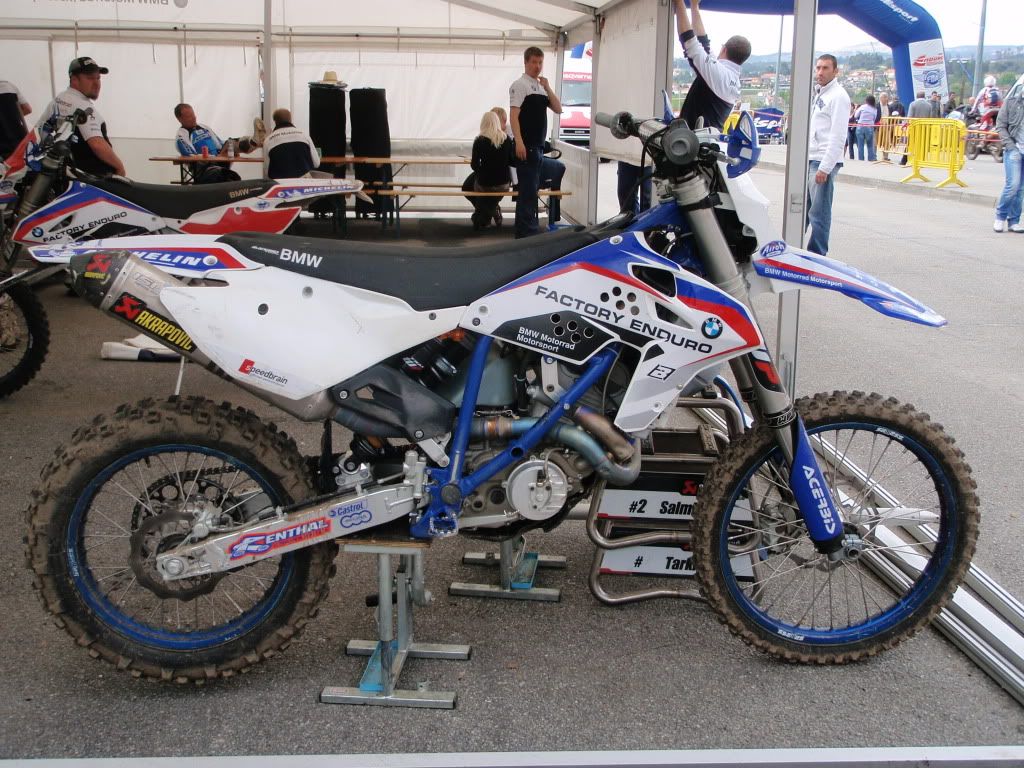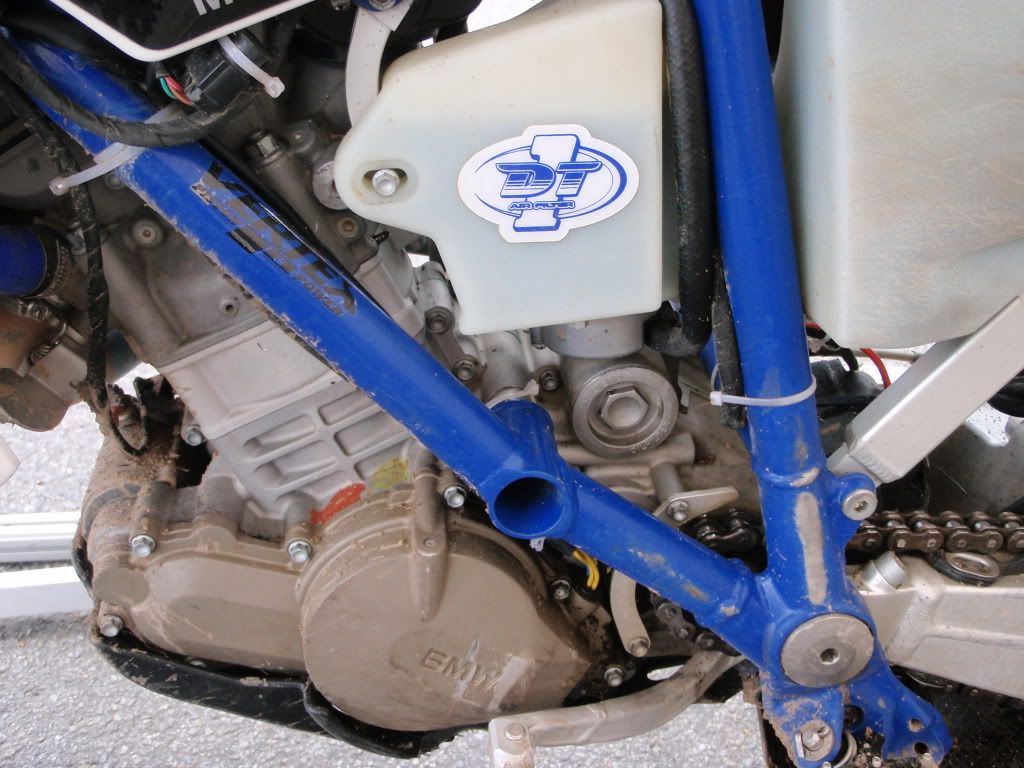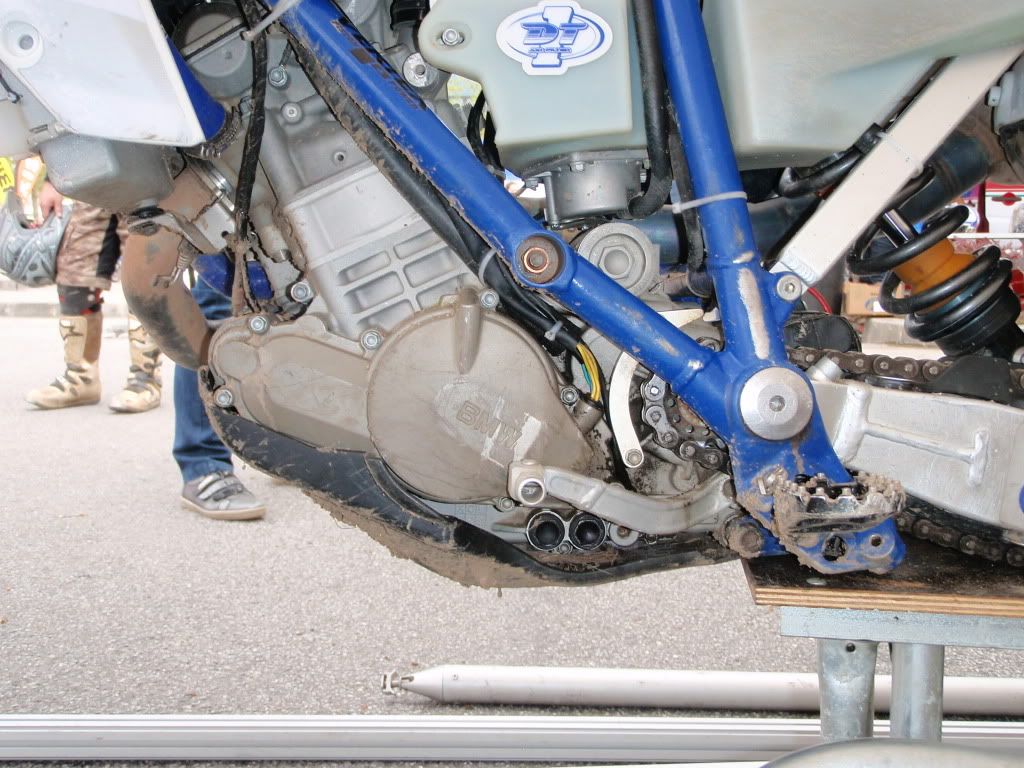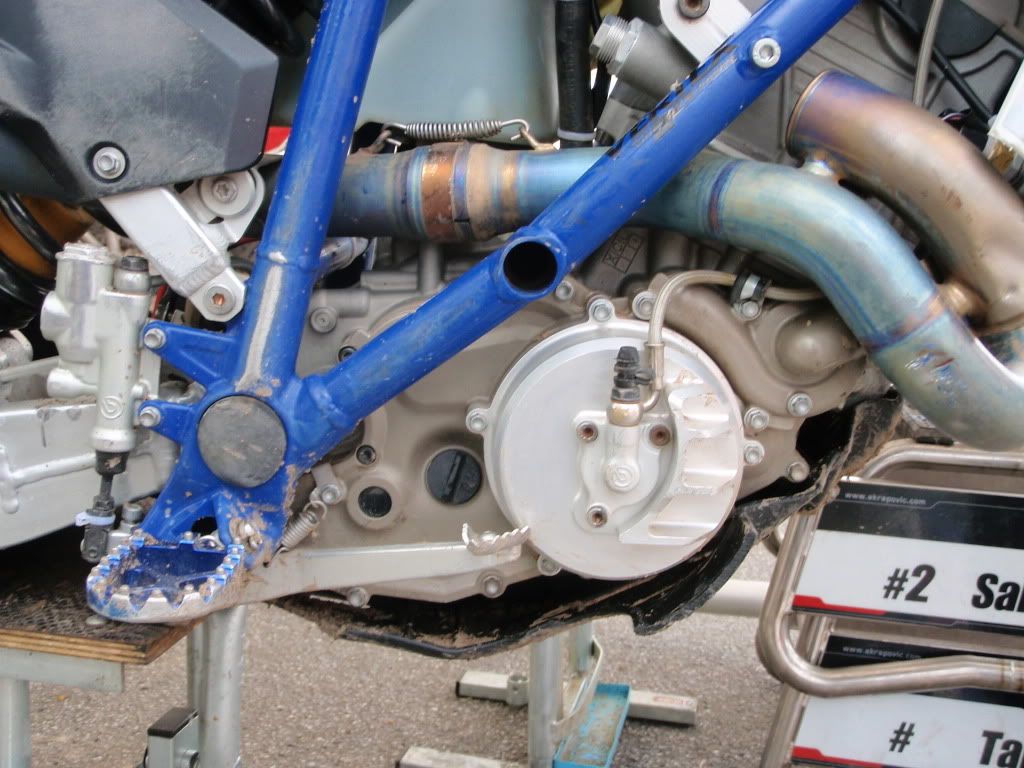A bit of info I came across re the above Blue Frame machines.
News 21 May 2010
Alex Gobert
WEC: BMW Husqvarna Motorsport to debut prototype in Italy
Share
Section: News Post: Alex Gobert
Tarkkala will be on a BMW Husqvarna prototype in Italy this weekend.

Tarkkala will be on a BMW Husqvarna prototype in Italy this weekend.
BMW Husqvarna Motorsport is preparing to send a prototype bike into action for the first time in the upcoming round of the FIM World Enduro Championship (WEC) in Lovere, Italy, this weekend.
The bike, which will compete in the E2 class at the event, is built around the Husqvarna chassis concept and powered by the innovative and highly capable 450 cc four-stroke engine developed by BMW Motorrad.
“Back in February we signed up to race in the E2 class of the Enduro World Championship under the new name BMW Husqvarna Motorsport,” explained Rainer Thoma, president and CEO of Husqvarna Motorcycles. “This collaboration of BMW Motorrad and Husqvarna Motorcycles aims to pool the two brands’ expertise in off-road competition for 450cc four-stroke machines.
“The forthcoming debut appearance of the prototype bike is the logical next step following a very promising phase of testing. Although our leading rider Juha Salminen will have to sit out this coming weekend through injury, we’re approaching the event in optimistic mood with our prototype bike, our other regular rider Marko Tarkkala and stand-in man Andreas Lettenbichler.”
Over the past few months, the people at the Husqvarna Motorcycles development department have been working closely with specialists at BMW Motorrad and Speedbrain to develop a bike combining the Husqvarna chassis concept with the innovative and accomplished 450cc four-stroke engine developed by BMW Motorrad.
The testing phase, which got underway at the start of the year, is now completed, and the bike will be entered in competition from this weekend.
“Our aim for the 2010 season was to be fighting for the title in the E2 class of the Enduro World Championship with the BMW Husqvarna Motorsport team,” adds BMW Motorrad motorsport director Berthold Hauser. “With Juha’s injury and his absence from the next race as a result, that’s going to be tough.
“In order to be successful despite this setback, it’s imperative that we make best possible use of the available synergies. With the testing phase completed the aim now is to use this genuine Husqvarna with BMW G 450 X drive concept to be up there fighting for success and victories in the sporting arena.”
BMW Motorrad Motorsport will remain actively involved in off-road competition with the BMW G 450 X. The team is planning to continue racing the bike in the European and the German Cross Country Championship and a range of Extreme Enduro events.
Meanwhile, the Husqvarna CH Racing team will continue to compete in the E1 and E3 classes of the FIM Enduro World Championship. The Supermoto and Motocross segments will also remain under the Husqvarna banner.
Also this press release;
Off-road team to race under the name "BMW Husqvarna Motorsport".
Evolutionary entrant in the FIM Enduro World Championship.
Munich/Cassinetta. The 2010 season will see BMW Motorrad Motorsport lining up in the E2 class of the FIM Enduro World Championship under the name "BMW Husqvarna Motorsport". The reason for signing up with the FIM under this new name is to achieve a targeted pooling of off-road racing expertise by the two brands BMW Motorrad and Husqvarna Motorcycles in the area of 450 cc four-stroke engines. The aim is to set up an ideal knowledge transfer through this sporting involvement, while at the same time optimising the team's performance.
Rainer Thoma, President and CEO of Husqvarna Motorcycles, explains: "In order to achieve sustainable economic as well as sporting success, it is essential to exploit synergies as best we can. That is why we are now collaborating intensively with our colleagues at BMW Motorrad. We are pooling the enormous expertise of both brands: know-how from BMW Motorrad will flow to Husqvarna and vice-versa."
The BMW Husqvarna Motorsport team is set to live up to this target: it will be entering the season with the BMW G 450 X under the team management of Speedbrain. In parallel with this, over the course of the season Husqvarna Motorcycles will be working together with specialists from BMW Motorrad and Speedbrain to develop a machine based on the Husqvarna frame/chassis concept and coupled with the 450 cc four-stroke engine developed by BMW Motorrad. Following extensive trials, the team plans to deploy the motorcycle in the ongoing event.
BMW Motorrad Motorsport Director Berthold Hauser adds: "Our goal is clear: with the BMW Husqvarna Motorsport team we intend to compete for the title in the E2 class of the 2010 Enduro World Championship. Our E2 class runner-up result in the drivers' and manufacturers' championship, our win in the Red Bull Romaniacs and many more triumphs and podium places around the world bear witness to the potential of the BMW G 450 X concept and the team's outstanding work in the season just past. Our joint involvement in enduro racing now provides the ideal platform on which to test how an authentic Husqvarna with the BMW G 450 X drive concept acquits itself in the competitive arena."
Team Husqvarna CH Racing will continue to run in the E1 and E3 class of the FIM Enduro World Championship. The Supermoto and Motocross segments will also remain under the Husqvarna banner.
For any queries please contact:
Benjamin Titz, BMW Sports Communications,
phone: +49 89 382 22998, mobile: +49 179 7438088
Martino Bianchi, Husqvarna Communications,
phone: +39 0332756405, mobile: +39 3357466508
Just curious.




 Reply With Quote
Reply With Quote

 I was impressed!
I was impressed!









 Your Privacy Choices
Your Privacy Choices
Bookmarks